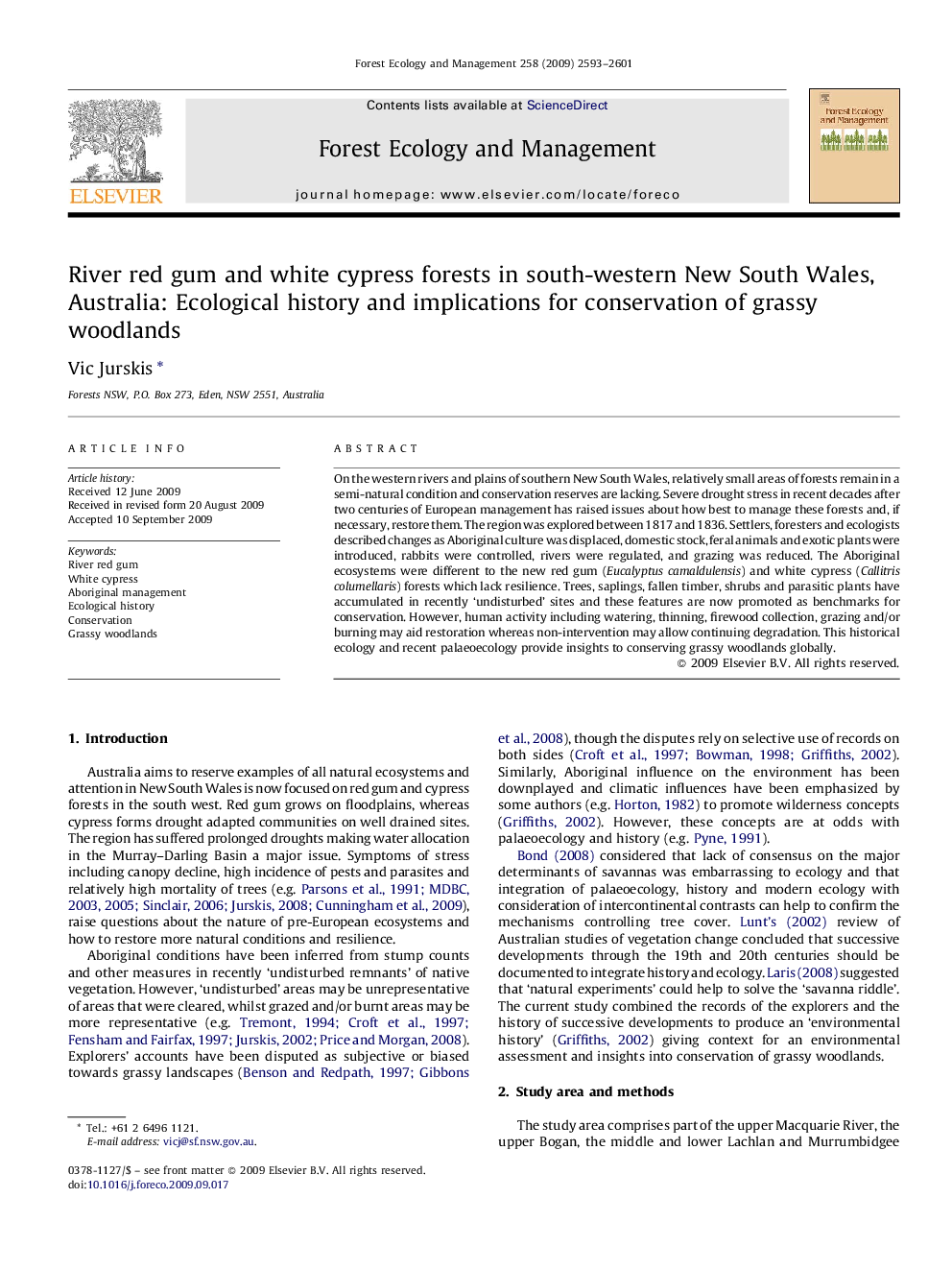| Article ID | Journal | Published Year | Pages | File Type |
|---|---|---|---|---|
| 88321 | Forest Ecology and Management | 2009 | 9 Pages |
On the western rivers and plains of southern New South Wales, relatively small areas of forests remain in a semi-natural condition and conservation reserves are lacking. Severe drought stress in recent decades after two centuries of European management has raised issues about how best to manage these forests and, if necessary, restore them. The region was explored between 1817 and 1836. Settlers, foresters and ecologists described changes as Aboriginal culture was displaced, domestic stock, feral animals and exotic plants were introduced, rabbits were controlled, rivers were regulated, and grazing was reduced. The Aboriginal ecosystems were different to the new red gum (Eucalyptus camaldulensis) and white cypress (Callitris columellaris) forests which lack resilience. Trees, saplings, fallen timber, shrubs and parasitic plants have accumulated in recently ‘undisturbed’ sites and these features are now promoted as benchmarks for conservation. However, human activity including watering, thinning, firewood collection, grazing and/or burning may aid restoration whereas non-intervention may allow continuing degradation. This historical ecology and recent palaeoecology provide insights to conserving grassy woodlands globally.
